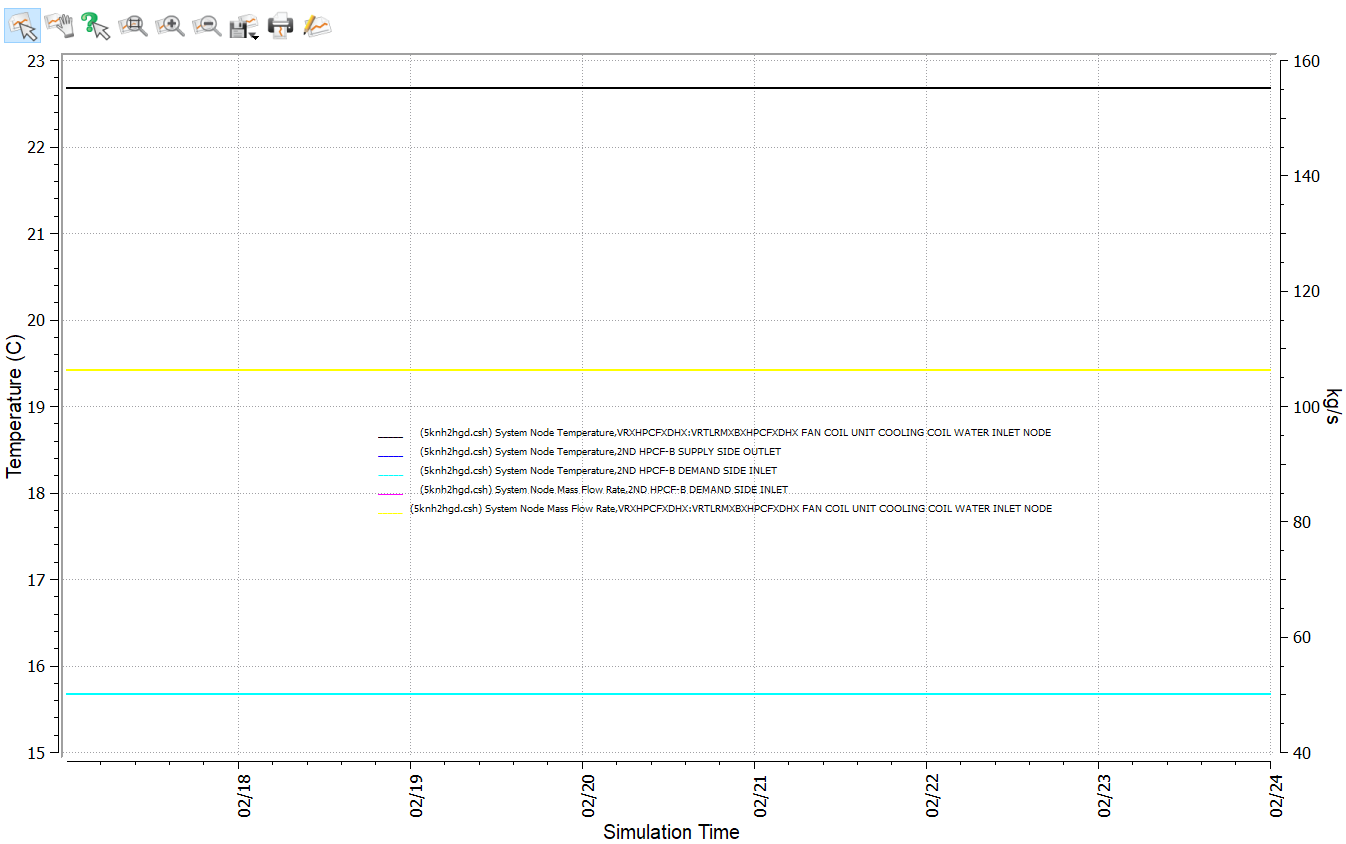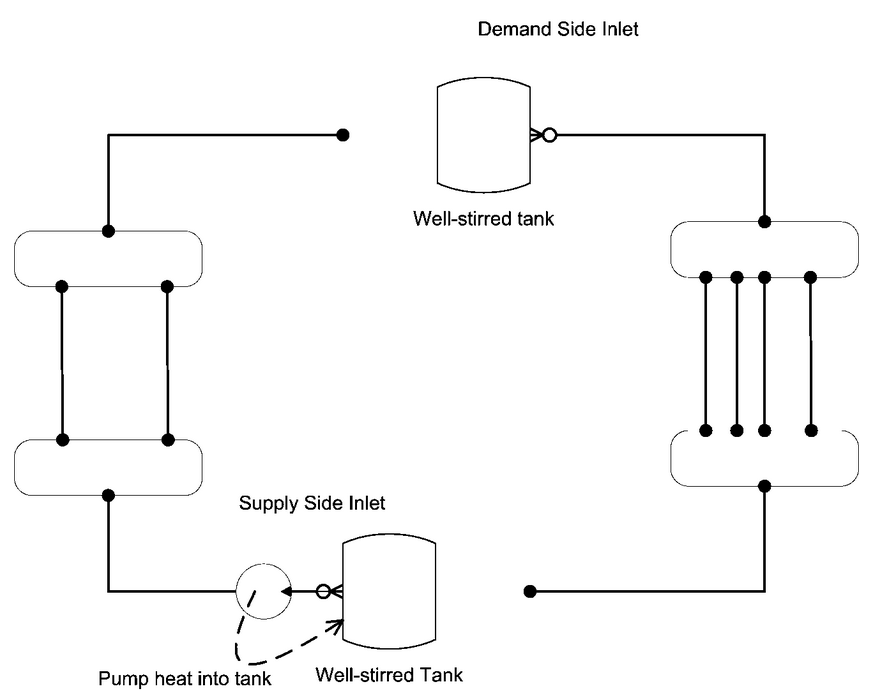Inconsistent Chilled Water Node Temperatures
Hi All,
I'm working on a complex chilled water plant on EnergyPlus via DesigBuilder, whose main goal is to properly activate the cooling resources based on their capacity and COP that vary with external conditions (dry-cooler, open loop ground water source wells, air cooled water chiller ,...).
I spent many efforts without achieving a satisfactory solution (maybe the only effective solution is through the EMS... sorry for sharing the frustration), but what i found really disappointing are intermediate results that are impossible: in more than one cooling resources configuration I found that the inlet temperature to the water terminals ARE DIFFERENT than the outlet supply-side temperature of the same loop:
15,7 °C at the supply side outlet node vs. 22,7 °C at the inlet of the FCU cooling coil (2nd HPFC-B loop)
15,9 °C vs 22,3 °C (2nd CRAC-B)
Here two link to the graph and the scheme for a better understanding and for illustrating that the differencies are on THE SAME LOOP (scheme is a screnshot from the .svg file generated by EnergyPlus).
I cannot guess how this is possible.
Any contribution is welcome
Best regards
Alessandro
Here another graph: node temps at supply side outlet node = node temp at demand side inlet node (light blue over blu line), and about mass flow rates (yellow line over magenta line)

Update:
So, do I have to think it is a sort of "bug" of the plant solver (taht is: the software does not work properly itself)?
Ag
2nd Update:
I've used only adiabatic pipes, so there are no thermal losses along pipes.
Now I've atteched three images about the three nodes to focus on (according to the order with which they appear in the circuit):
2ND HPFC-B SUPPLY SIDE OUTLET
2ND HPFC-B DEMAND SIDE INLET
VRXHPCFXDHX:VrtlRmXBXHPCFXDHX Fan Coil Unit Cooling Coil Water Inlet Node
image 1: plant branches scheme
image 2: node water mass flow rates
image 3: node chilled water temperatures
then a link to the IDF file








hello, may how I know how did you solve this problem?